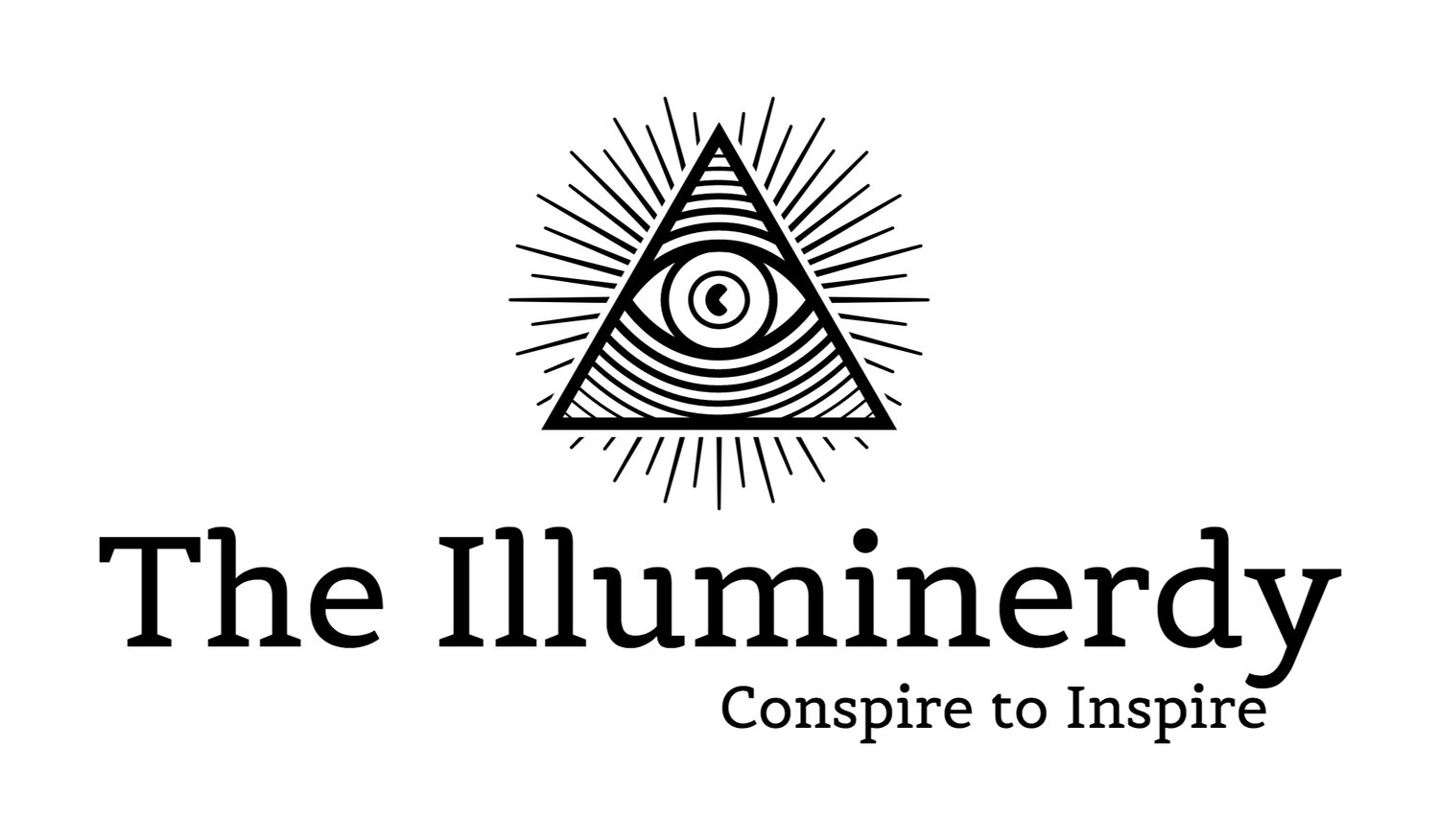Last time, I discussed the merits of using well-known conspiracies as the basis for your games. While these ideas are often useful, sometimes it is far more effective if you ground all of the mystery, schemes, and plot of your game into a tiny, mundane object. Consider Dan Brown's novels: people love to see hidden symbols in things they see every day. A fantastic example for such an idea is something everyone has in their pocket: the U.S. One Dollar Bill. This blog post will take our small, unexciting, and object-of-marginal-worth and transform it into a powerful plot hook that you can base adventures (and even a campaign) around. To get in the proper mindset, for our simple experiment, imagine the following scene:
Rebecca holds the dying man in her arms. Realizing her contact only has a few seconds left, she tries to coax a final clue from the man before it is too late. Coughing, the man thrusts a small green piece of paper into her hands, whispering the words “thirteen….Freemasons…great seal” with his last dying breath. Looking down at the paper in her hands, the PC realizes it is a simple, albeit wrinkled and bloodstained, one dollar bill. Surely the NPC would not have wasted his life to give her such a meaningless scrap of paper and ink, let alone whisper cryptic words to her. What could this mean…?
Previously, I posited that it was possible the Freemasons were responsible for founding the United States in their own image. Let's extend that theory. Consider some of the most famous examples: George Washington, Benjamin Franklin, and Thomas Jefferson. These three are all linked to the dollar bill. Washington's face graces the bill's paper, and Franklin and Jefferson both served on the committees that were responsible for designing the Great Seal (see below). As any conspiracy theorist will tell you, this can hardly be considered a coincidence.
What, pray tell, might those who were responsible for the dollar bill’s design have hidden on its mundane surfaces?
In the upper right-hand corner on the front of the dollar bill, there is a small, yet curious image.
What appears to be a small owl peeks over the edge of the "1." While this by itself is hardly more than a silly coincidence, some would consider this an explicit example of another secret society's influence: the Bohemian Club. What the hell is the Bohemian Club, you ask? Supposedly, the most powerful men in the world meet once a year in the secluded "Bohemian Grove" to decide the future for the world over the next year. For the purposes of your game, the Bohemian Club could be a number of things, probably significantly more nefarious than they really are, especially considering the mystery surrounding their strange yearly practices--though the the group's motto "Weaving spiders come not here" should be inspiration enough for those seeking specifics. The connection to the dollar (and thus, the Freemasons) arises when one examines the strange idol these all-powerful ideologues sacrifice things to. Behold, the all menacing OWL!
"Well that's odd," you say. But that's probably just a coincidence. Au contraire, mon frere.
Basically, that owl shows up everywhere. What exactly the owl has to do with Freemasonry is somewhat vague--but that's the point isn't it? If it was obvious these secret-keepers would obviously be doing a shitty job. Thus, what connection exist are ultimately up to you and can definitely serve as strong plot hooks, puzzle clues, or fun in-game mysteries.
Or, to take a page from Dan Browns book (almost literally), just wow your players by dropping this picture in front of them.
With all of these things, what ELSE could be hidden on the dollar?
The Great Seal of the United States adorns the back side of the dollar bill. The Seal has two sides. The obverse of the Seal holds a bald eagle with outstretched wings (with 33 feathers for the 33 degrees in the Scottish Rite!), clutching an olive branch, thirteen arrows, and a banner bearing the phrase “E Pluribus Unam” in its beak. The eagle is protected by a shield with thirteen stripes, below a crest of thirteen mullets arrayed in the shape of a six-pointed star.
A great deal of controversy surrounds the number 13 on the one dollar bill. There are thirteen steps to the Great Pyramid. There are thirteen Arrows and thirteen olives on the branch clutched in the right and left talons of the Great Eagle (respectively).
There are thirteen bars and stripes in the coat of arms shielding the Great Eagle. Thirteen letters in Annuit Coeptis, and E Pluribus Unam, 13 stars (arranged in a six-pointed-star) above the Eagle’s Head, and 13 beads on either side of the Great Seal on the rear plate of the bill. While the conventional wisdom would indicate that this represents the original 13 colonies of the United States, the number 13 represents something much more significant for Masons. Indeed, if rumor is to be believed, the Knights Templar were a founding organization for the Freemasons, and the very reason Friday the 13th is considered bad luck dates back to the systematic execution and extermination of the Knights Templar on October 13, 1307 by France’s king Philip IV and Pope Clement V.
(As an interesting extension, the last Grandmaster of the Knights Templar, Jacques De Molay, lends his name to the Masonic youth organization DeMolay. This can hardly be coincidence as a Game Master What was De Molay hiding?!.)
For another example, look at the Unfinished Pyramid on the back of the dollar. Perhaps that is secretly an image of a REAL unfinished pyramid. Where is the capstone? Inside Solomon's Temple? Perhaps a clue lies with those that use the eye as their symbol? Indeed, perhaps an ancient Egyptian cult protects its secrets?
Above the 13 steps of the unfinished pyramid, the eye of the Great Architect watches over the nation that Freemasonry built. Indeed, if one needs more concrete proof of the Masonic conspiracy, one needn't travel far.
The six-pointed star is said to be a powerful and important symbol for the Freemasons, using it in many of their temples, and iconography. If one connects the letters “M, A, S, O, N,” from the letters in Annuit Coeptis and Novus Ordo Seclorum, it creates a six-pointed star that matches the 13 mullets above the Eagle's head. Coincidence? Unlikely!
All of these elements can hardly be ignored, especially when considered in entirety. This begs the question, what does it all mean? At the very least, these coincidences are covert declarations of intent from the Freemasons. Indeed, the very fact that the U.S. Dollar is the major reserve currency in the world underlies this global conspiracy.
CONCLUSION:
Freemasons are a closed secret society. Their practices, beliefs, and goals are closely held secrets. It is this secrecy and mysteriousness that only spurs the fear of the unknown and the obsessive quest for discovering the true nature of things. The fear of the unknown; the fear of those that do their best to conceal the truth.
The members of this mysterious organization do not want the uninitiated to know what those symbols are. It will never be public until your PCs reveal the truth to the world. They concealed messages in mundane pictures, architecture, and objects, meant to only be decipherable by others who understood the true meanings behind such symbols. In fact, many conspiratorial-minded writers claim that because Masons have concealed their hidden agenda in plain sight, their secret plan—once illuminated—is there for the enlightened (and you readers of the Illuminerdy) to see--all you need to do is seek it out.




